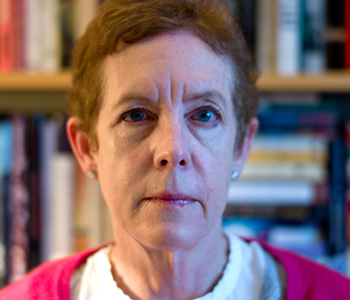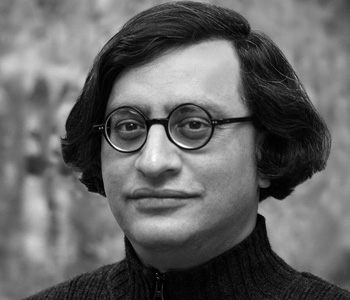Ann Marie Stock
On Location in Cuba: Street Filmmaking during Times of Transition
University of North Carolina Press
320 pages, 9 x 6 inches
ISBN 978 0807859407
Cuba has undergone dramatic changes during the past two decades. As global tides washed over the island in the early 1990s, Cubans did their best to remain anchored. How did they respond to the break-up of the Soviet Union — their nation’s abrupt loss of a major trading partner and symbolic model? And how have they faced one of the greatest challenges posed by globalization — preserving their sense of home and community while engaging with an increasingly connected world?
On Location in Cuba probes these questions. The lens of cinema—defined broadly to include film, video and audiovisual art—permits an analysis of this pivotal moment in the island’s history, this “special period” of accelerated change and great uncertainty.
In the United States, we tend to think that Cuba is on the brink of change. But, in fact, the island has already instigated and assimilated remarkable shifts—the legalization of U.S. currency, the development of tourist infrastructure, the encouragement of entrepreneurial activities and small businesses, and even the Pope’s celebration of Catholic mass in Revolution Square. It’s crucial to acknowledge and examine recent transformations if we are to effectively engage with Cubans in the near future.

We tend to think that Cuba is on the brink of change... in fact, the island has already instigated and assimilated remarkable shifts.
In Cuba, the prominence of culture and its centrality to political and economic forces can surprise those unfamiliar with it. I recall one consulting trip early in this century, when our delegation was invited to the Presidential Palace for dinner with Fidel Castro and several members of his cabinet. As we milled about informally, the discussion ranged from golf games to the Gulf War, and included Cuban films and Disney cartoons. One U.S. visitor, impressed by Castro’s knowledge on a wide array of subjects, asked the then Commander-in-Chief how much time he devoted to politics and how much to culture. The response was immediate and unequivocal: “In Cuba, these two cannot be separated. Culture and politics are one in the same.”
To track the experiences of several filmmakers and developments in the audiovisual sphere is, then, to explore broader cultural, political and economic issues. On Location in Cuba acknowledges and interrogates this convergence so as to make sense of this recent time of accelerated transformation on the island.
The book tracks the transformation of a national cinema into a transnational audiovisual practice—one emanating from new technologies, straddling a series of geopolitical and formal borders, financed by multinational capital, and directed at consumers around the world. Whereas global processes often obliterate “local” cultural expression, this study demonstrates how culture workers—filmmakers here—have activated global processes and transnational linkages in order to sustain, strengthen and reshape national identity.
Cuban identity, once crafted by the revolutionary collective, has become more of a “coproduction,” growing out of the collaboration among actors working both within and outside the state apparatus. No longer does “Cubanness” emanate primarily from island institutions; instead, it emerges from the mediation between state actors and individuals, oftentimes aligned with international and non-governmental organizations based outside Cuba. And this marks a significant change. What results is a sense of national identity that retains Cuba’s socialist principles of equality, social justice and solidarity while integrating the emerging values of individualism.
I traveled to Cuba for the first time in 1989 and have been back more than 50 times since. As a graduate student attending the International Festival of New Latin American Cinema in Havana, I was amazed by the films and exhilarated by the access I had to their creators. Over the years I continued to participate in this Festival, and stepped up my collaboration with Cuba to include designing and leading study programs, consulting for U.S. foundations and NGOs, and participating in a variety of conferences and cultural events on the island. All the while, I documented Cuba’s changing cinema tradition.
Cuban films today are increasingly made by young people “in the streets”—that is to say working outside of state channels. When I first landed in Cuba, making a film required truckloads of equipment, a crew of hundreds, and large sums of money. Today it can be managed with a handheld camera and personal computer, a few friends, and a fist full of fulas. An endeavor once centralized in the national film institute has given way to decentralized audiovisual production.
Fragment from an animation by Yurina Luis Naranjo, reproduced in the book on page 140

On Location shares the voices and visions of dozens of Cuban filmmakers. With candor they explain their interest in probing subjects once considered taboo in Cuba—sexuality, domestic violence, drugs, prostitution, housing shortages, censorship, discrimination, and so on. They reflect on the impact of new technologies on their work, and note some of the ongoing challenges of making films in their country. They tell about the ingenious solutions they’ve devised to resolver or make do: with a camera strapped on to his bike, Esteban Insausti pedaled around Havana seeking informants for his documentary on the city’s locos (crazies); Juan Carlos Cremata managed to create a road movie on a shoestring by calling into service his entire family—even casting his grandmother in a role; lacking access to a dolly, Alejandro Pérez rigged up his camera so it would swing in circles from a pole.
The juxtaposition of these Street Filmmakers’ experiences reveals their diversity and dynamism. Some see themselves as artists above all. Others are more intent on the business of cinema. Some characterize themselves as revolutionaries. Others steer clear of labels altogether. Most are based on the island, but some “commute” to distant locales while still considering Cuba to be their home. The perspectives of these young artists reveal the island and its inhabitants to be complex and nuanced.

Cuban films today are increasingly made by young people 'in the streets'—that is to say working outside of state channels.
Very little attention has been paid to Cuba’s film production in recent years – and even less to the audiovisual activity by a new generation of artists mediating national and trans-national forces. Given all the changes that have occurred in Cuba over the past two decades—including the erosion of state hegemony, the rapid expansion of the public sphere, the engagement with global markets, and the reconfiguration of Cuban identity—there is a pressing need to examine the dramatic transformation of island filmmaking. On Location in Cuba represents the first book-length study in any language to interrogate the island’s changing audiovisual landscape so as to make sense of these larger shifts. As these audiovisual artists navigate the waters between a state-controlled system and a market mechanism, they provide us with a window through which to view an island in flux.




We don't put paywalls. We don't distract you with ads. We don't sell your data.
Please help to keep this running!